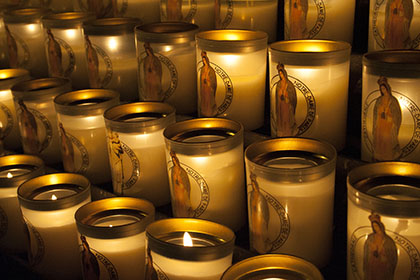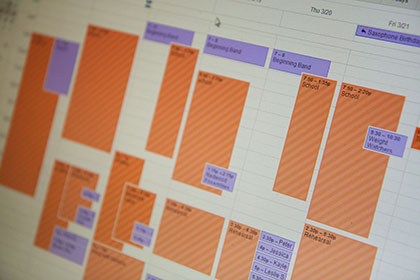Hey there, we’re Mackenzie and Theresa, health-conscious sister-friends who were probably separated at birth. Mackenzie is a newly minted Occupational Therapist, and Theresa is a person living with multiple chronic illnesses: rhuematoid arthritis (RA), fibromyalgia, irritable bowel syndrome (IBS), and migraines. We thought we could offer a dual perspective on pain, so we sat down at one of our favorite coffee shops with some delicious tea and cake and, as per usual, the conversation turned towards health.
ML: You told me long ago and far away that you were misdiagnosed at first, and your pain was kind of brushed aside by your pediatrician. What was that like?
TD: Yeah, when I first developed RA, I was 14, and my pediatrician told me it was just growing pains. My mom had had similar pain when she was younger, so I just thought it would go away with age. I was also sleeping like 18 hours a day, and people kept telling me that’s just how teenagers are. But I was always tired. My joints were tender, and I was super sensitive to cold, but I was under the assumption that this was kind of normal. So I questioned it a little but I didn’t really pursue it. Honestly, I was too tired to pursue it.
ML: That’s a really common question: how much of what you’re experiencing is normal, especially when it comes to pain? One thing that will help you identify “good pain” from “bad pain” is how chronic it is.
TD: Yeah, chronic pain is usually a sign that there’s a problem. For the record, “chronic” means the pain happens more days than not. Which is a definition I wish I had 11 years ago!
ML: Pain is, at a fundamental level, your body trying to tell you that something’s wrong, so it’s important to know what kinds of sensations are linked with what structures in your body.
| Pain Sensation |
Body Part Involved |
| Cramps, dull ache |
Muscle |
| Sharp, shooting |
Nerve root |
| Sharp, bright, lightning-like |
Nerve |
| Burning, pressure-like, stinging, aching |
Sympathetic nerve |
| Deep, nagging, dull |
Bone |
| Sharp, severe, intolerable |
Fracture |
| Throbbing, diffuse |
Vasculature (blood vessels) |
Even in this table, you can see that sensations for different body parts can be very similar, like a “dull ache” can be either muscle or bone pain. But it’s really a matter of your intuitive sense of your body when trying to figure out what body part is involved.
TD: Plus, it’s really important to take your symptoms as a collection, not just as separate occurrences. Separately, flu-like symptoms, joint pain and fatigue can be any number of things, but put together they make up a pretty standard definition of RA, or similar autoimmune disorders. Unfortunately my pediatrician didn’t put the pieces together. What are some questions she should have asked, though?
ML: Some questions might include, where is the pain focused? Is it radiating? When does it happen: during a particular time of day, or during a specific activity?
TD: Right, like my RA pain is worst in the morning and improves throughout the day. My life made so much more sense once I read that “morning stiffness” is an RA symptom. IBS, on the other hand, seems irrelevant to when or what I eat and strikes randomly, like a Jackson Pollock painting.
ML: Those are some other good points to consider: Are there triggers, like something you’ve eaten or something you’ve done? Is it constant or intermittent? Having these answers before calling an MD might’ve smoothed out those appointments, Theresa.
TD: Yes, and even with these answers I still was misdiagnosed. I always encourage people to advocate for themselves if they need more testing. For me, the severity of the pain was also very telling, once I saw a more open-minded doctor.
ML: The medical world often rates pain on a 0 to 10 scale, with 0 being no pain and 10 being the most pain you’ve ever felt in your life.
TD: And that’s a very subjective scale, because what constitutes one person’s 10 may barely register on another person’s scale. I’ve met other people with the same inflammatory markers (i.e. blood test results) as me who have more and less pain based on this scale. Pain really obscures your perspective, so your own scale may change—mine definitely has. It wasn’t until my treatments started working that I realized how much pain I was actually in, and how much pain I had accepted as “normal”.
ML: And that probably affected how you were misdiagnosed.
TD: I really, really wish I had gotten a second opinion or had the Internet to do my own research (thanks, dial-up!). And I didn’t have any ER-worthy stuff—like bleeding, fever, or fainting. So, in some ways, my diagnosis was slow because I was managing my pain relatively well.
ML: You’ve had a lot of diagnoses now. What’s your first reaction when you get a new diagnosis?
TD: Well, first I add it to my Pokedex of sickness! [Laughter] Then I research the hell out of treatments, fill prescriptions, etc. I’m always most interested in how to manage the pain on the daily, though.
ML: I think that’s a pretty common reaction—wanting to make the pain go away.
TD: I think so, and it’s very pragmatic, because chronic pain can change your whole perception of life.
ML: That goes back to the idea that pain is your body’s way of telling you that something’s wrong. The problem with chronic pain, especially after diagnosis, is that your body keeps telling you something’s wrong, but you already know that and you’re trying to make it stop.
TD: Your body is that ex that keeps leaving you voicemails and won’t stop calling.
ML: Exactly!
TD: I know what’s comforting about my RA’s medical treatment is that I’m able to treat the root cause of the pain, which is my overactive immune system.
ML: But is that always possible? Especially with chronic conditions? I know that doctors are only now beginning to understand what causes Fibromyalgia and IBS. So a lot of treatment still focuses on coping with pain, not necessarily eliminating it.
TD: For me, I’m on a lot of medications to knock out the disease processes that are causing my pain, but I still find that the pain, managing meds, and therapies impact my everyday life. I think my biggest coping mechanism besides the medications is accepting what I can and can’t do. There are a lot of things that people expect that I can do, but they’re very painful. It’s hard for me to accept that I deserve to not feel pain when it means not being involved in certain parts of the world. I’m naturally very outgoing but I tend to be more of a homebody to prevent pain-hangovers. For example, walking around the mall won’t be painful while I’m doing it, but later tonight and tomorrow, I’m definitely going to feel some pain. I have to take into consideration what I need to do the next day and make sure I can rest or medicate before deciding to embark on a pain-inducing activity.
ML: What are some other activities like that?
TD: Well, sometimes it’s the little things you don’t think about—I always make sure to carry bags on my shoulders instead of my hands, when possible. Smaller joints are more delicate and deteriorate faster, and I’m trying to keep my hands working for as long as possible! Or, for example, I like to cook, but can only stand for about 15 minutes before my lower body starts to ache, so I try to sit on a stool while I do meal prep. I also use really sharp knives so I can put less pressure on my joints when chopping things—otherwise my hands will ache the next day. Knowing how often I’d like to eat (you know, daily) that can add up to a lot of pain if I’m not careful.
ML: That’s where my field really shines in treating folks with chronic pain, I think. Occupational therapy looks at “occupation” as anything people do to occupy their time, which means pretty much anything you do throughout the day is fair game. With chronic pain, OT looks at how to restructure activities so they’re less painful and less effortful, and teaches energy conservation techniques to combat the fatigue that often comes with chronic pain. People without chronic pain don’t usually think about how exhausting pain is, but spending the day in even a little bit of pain will wear thin on most people’s patience. It affects motivation, mood, and especially the ability to interact with other people.
TD: So basically everything. I know one thing we bonded over at first was being migraine-buddies….
ML: Yep! My migraines are chronic and they come with a lot of what I like to call accessory pains (in my knees, hips, back). They’re not the focus of the migraine, but they’re still caused by it. I notice for me that the mindfulness practice of non-judging is really helpful with these accessory pains.
TD: Non-judging?
ML: I just think of the pain not as “bad” but rather as a part of me that’s just there, and I find I can get through more of my day than if I don’t. It doesn’t make the pain go away, but it helps me work with it better. Non-judging means taking away that little voice that evaluates everything as “good” or “bad.”
TD: So, basically, making a conscious choice not to give into the “I’m in pain, and it sucks that I’m in pain” mentality. I think that falls under the umbrella of accepting your own condition. I know for me, I started being able to do a lot more and be a lot happier once I started understanding my limits and figuring out how to work within them, rather than fight against them.
We’d like to invite readers to share their stories about how they’ve coped with pain, chronic or not, in the comments below! Who or what has supported you and made your life better?
MacKenzie Lorenzato is a contributing writer, newly minted occupational therapist, baker, Joss Whedon fan, Disney guru, musical theatre lover, dog person, and tree climber extraordinaire.
Theresa Dee is a contributing writer, Bay Area native, and a big ol’ geek about thrifting, tea roses, fantasy-sci fi, and intersectional politics. Reach her at: theresa.dee.writes (AT) gmail (DOT) com

Photo by Rob Adams









